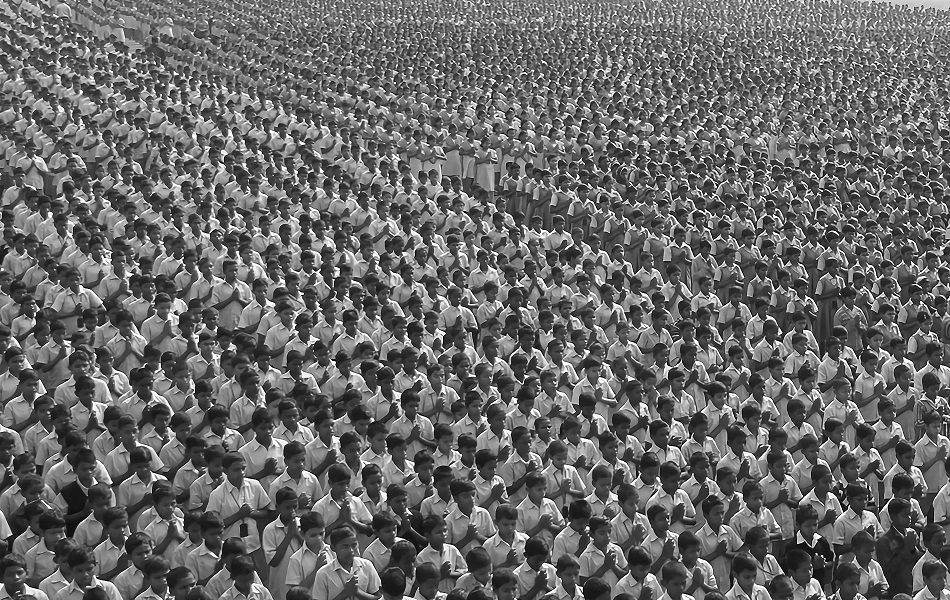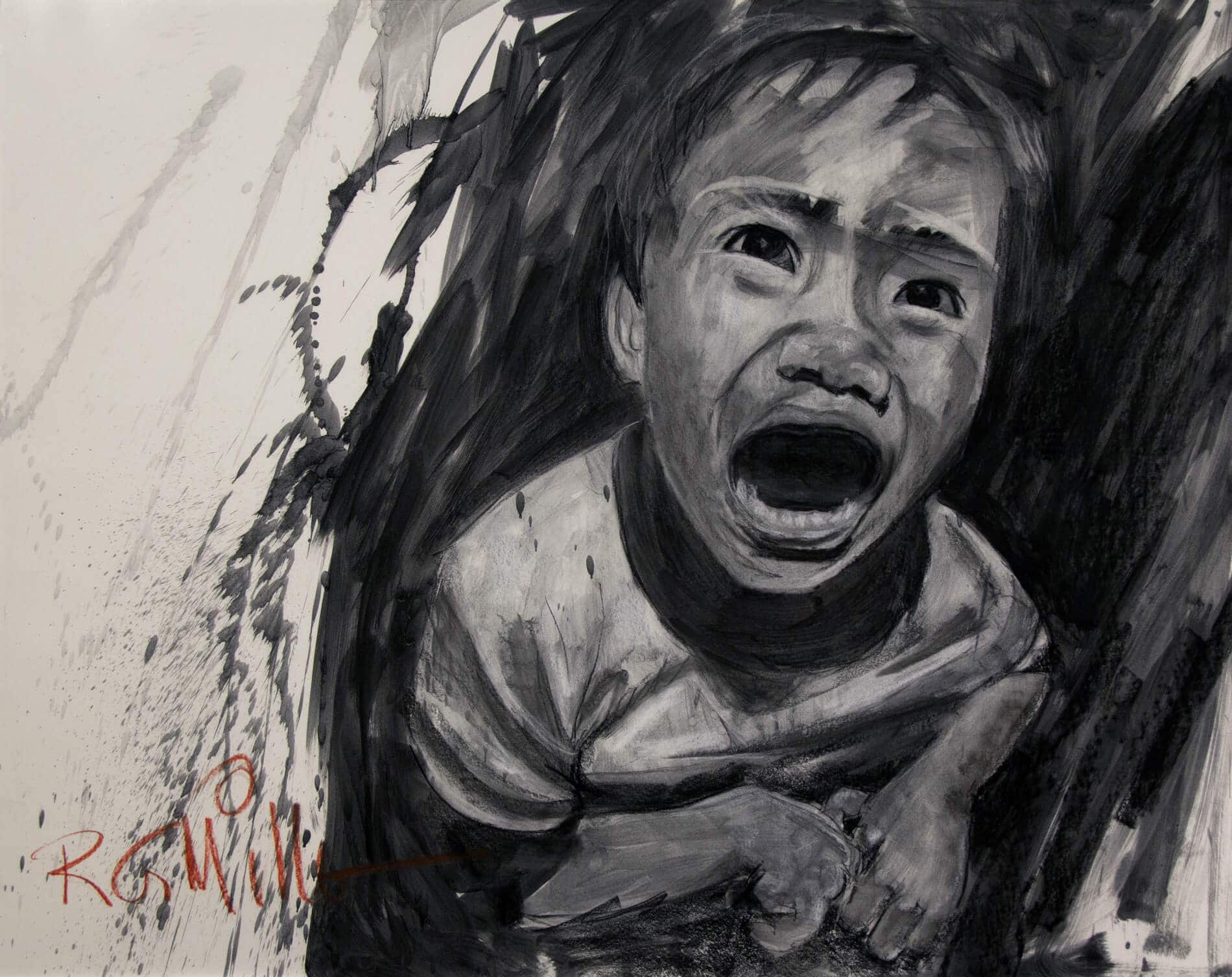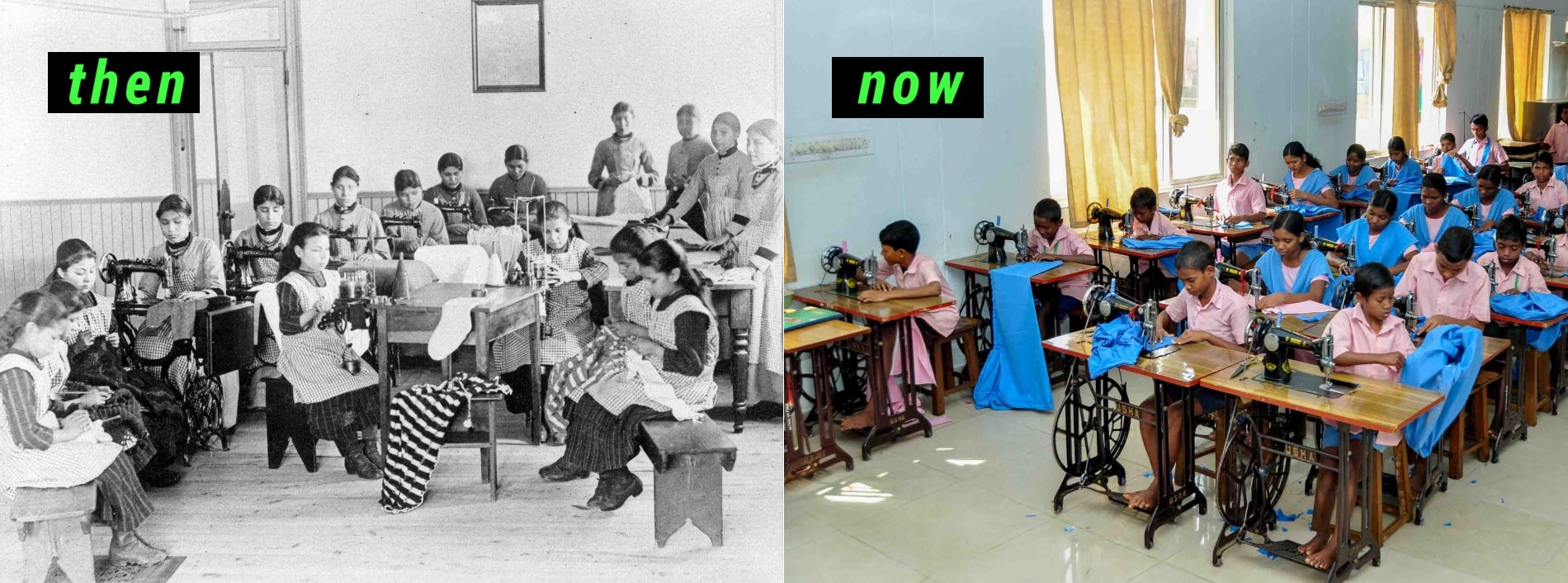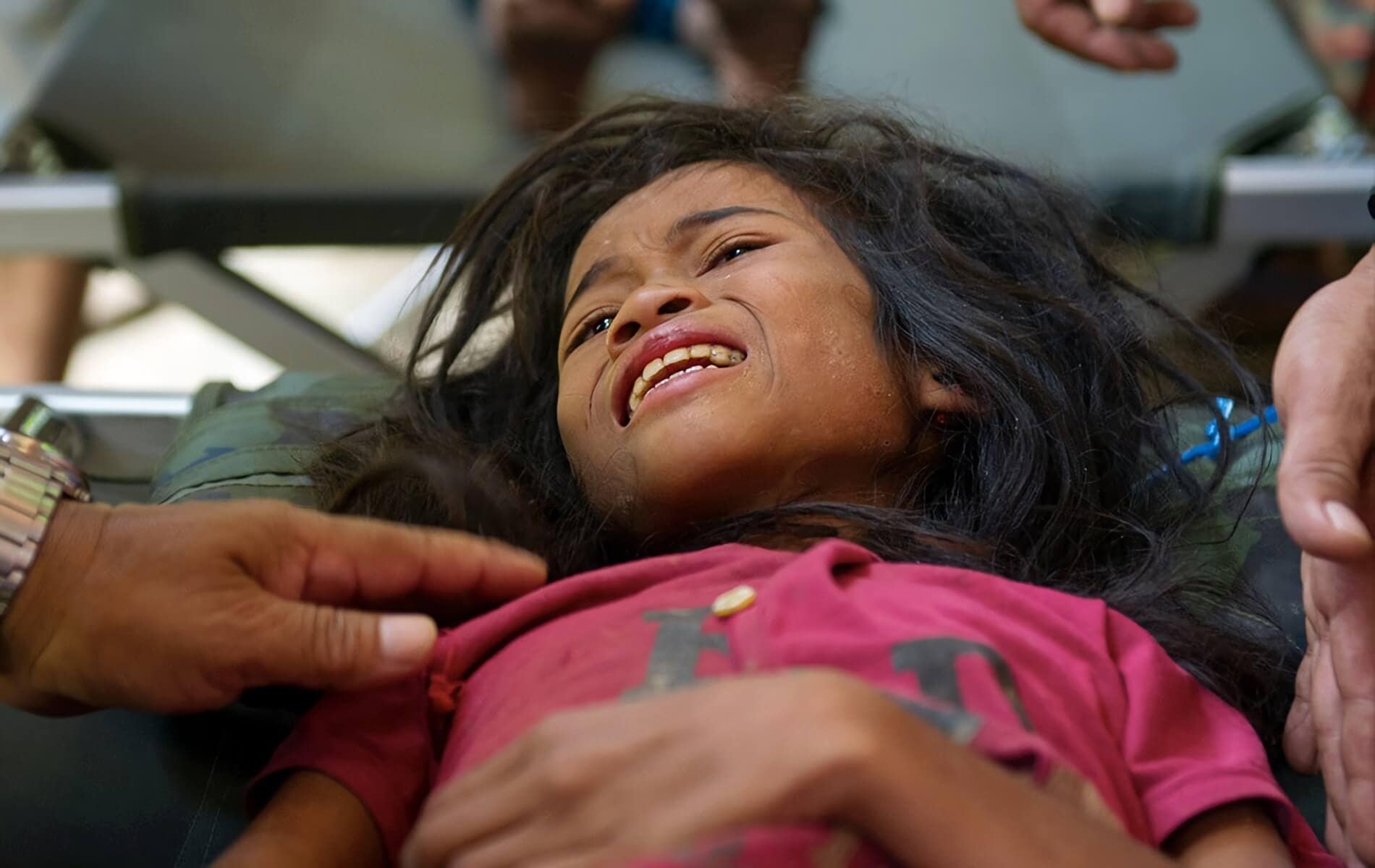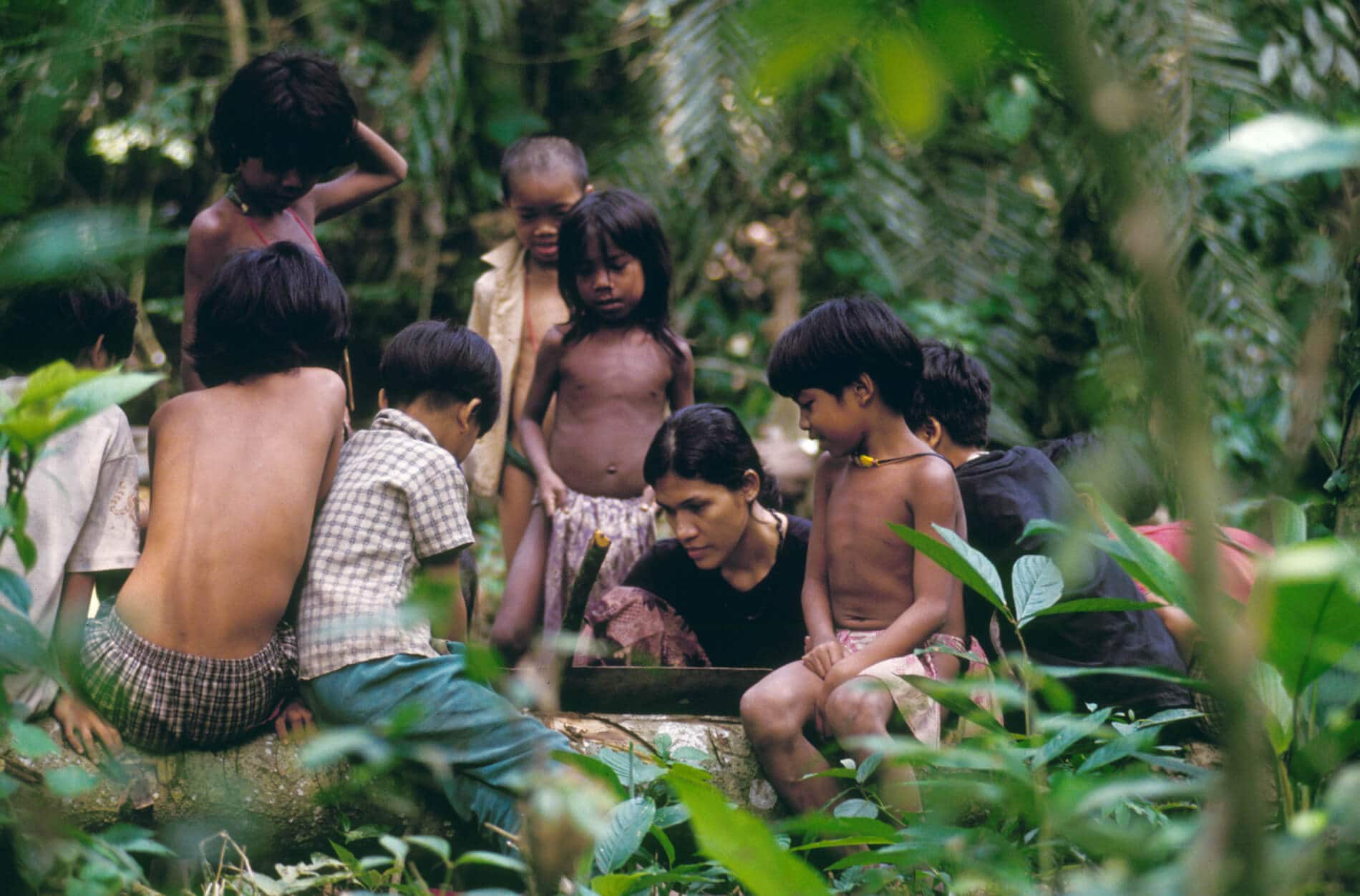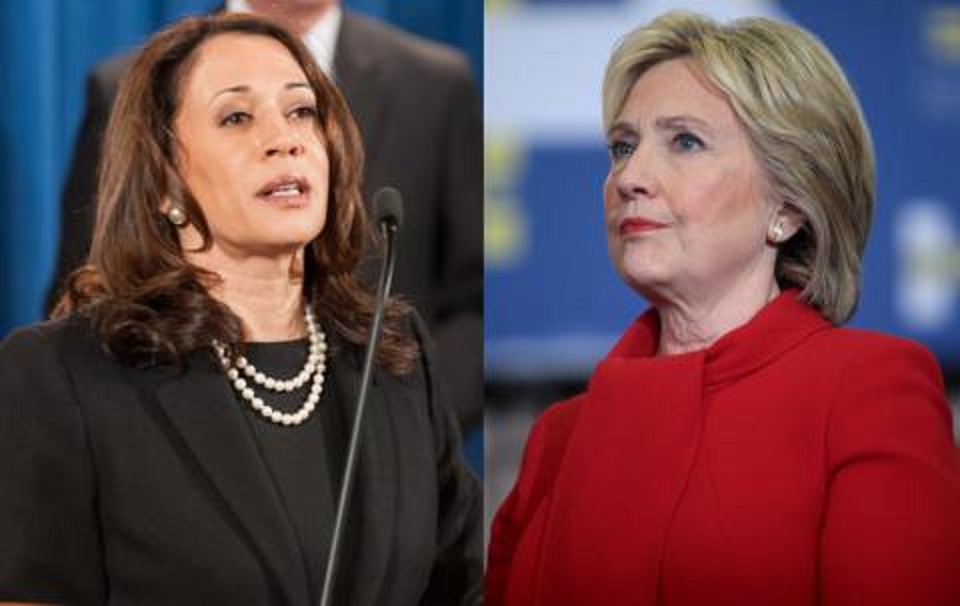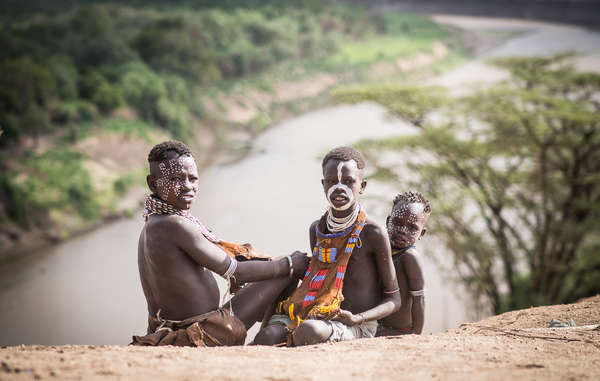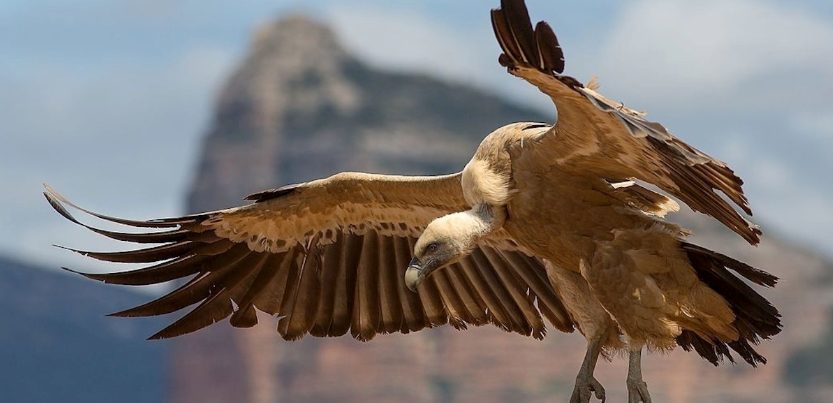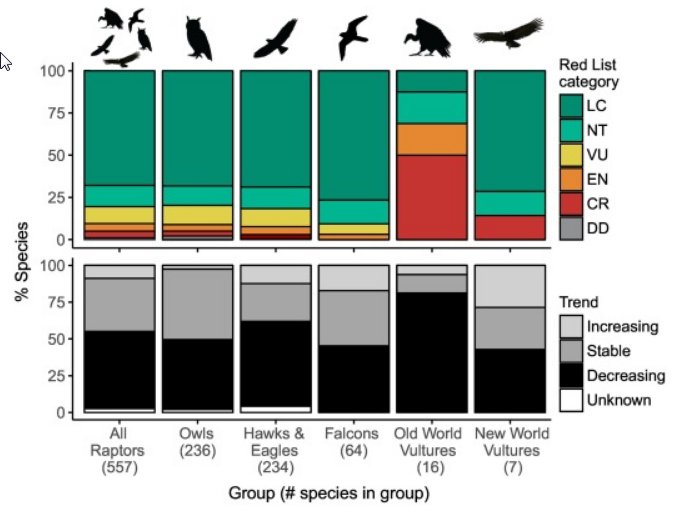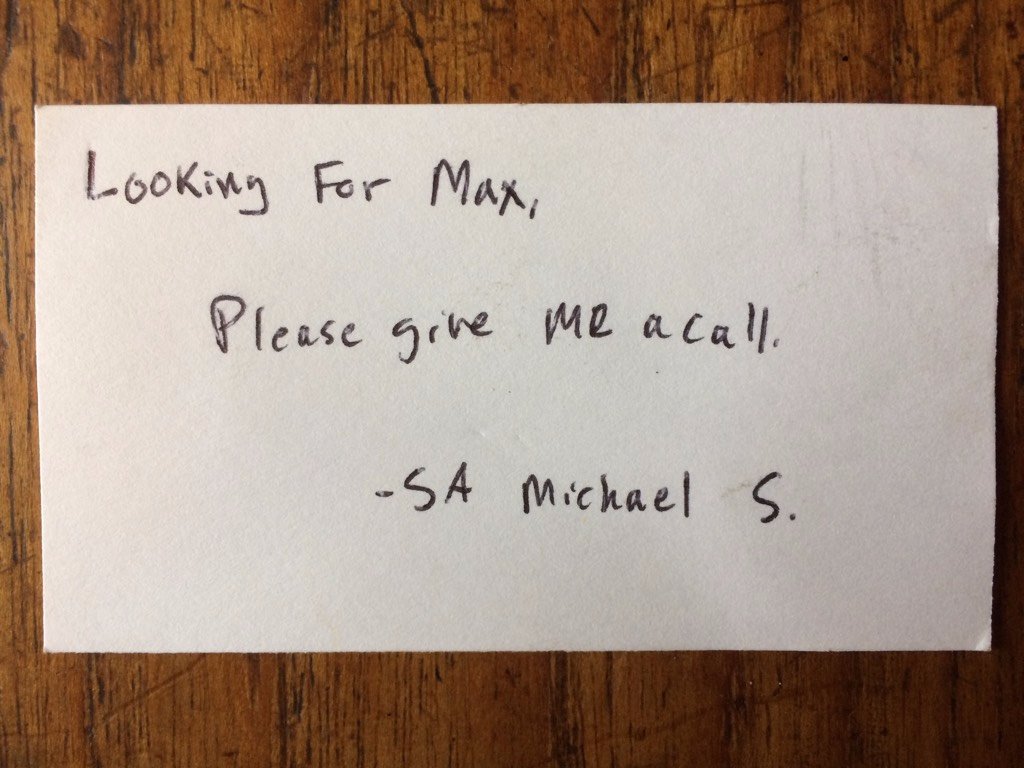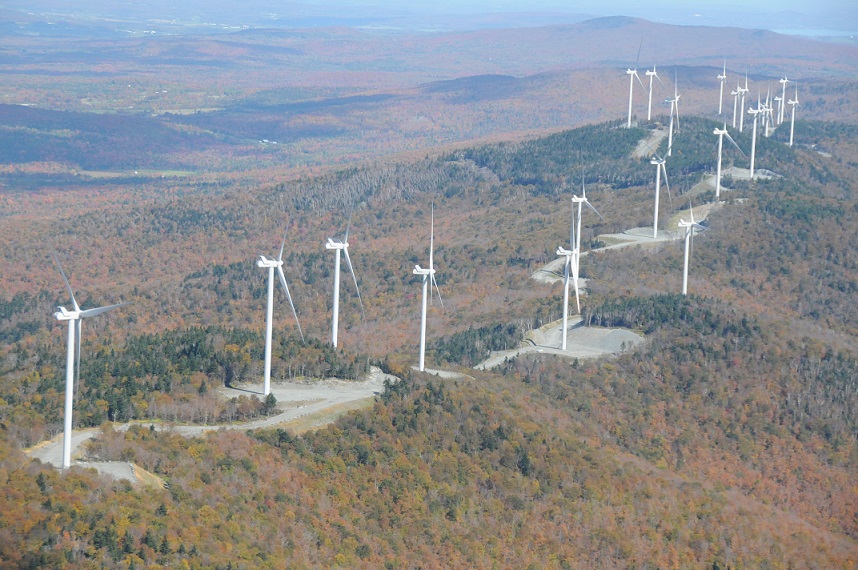Kamala Harris is black. She is a lot of other things, too: a person of South Asian descent, a woman, a former prosecutor and state Attorney General, a sitting Senator, and, according to Barack Obama, “the best looking attorney general in the country.” (I am your sister in side-eye, Michelle.) Out of nearly 2,000 senators in the country’s history, Harris is one of only ten black Americans and two black women to have held the position. Her personal characteristics and political accomplishments, together with the intelligence and tenacity that propelled her to the Senate, have made her a highly visible prospect for the 2020 presidential race. Already, influential Democrats have shown a strong interest in Harris, with prominent former Clinton donors meeting privately with Harris in the Hamptons. The San Francisco Chronicle called her the Democrats’ “Great Blue Hope,” and a Guardian writer suggested that the combination of Harris’s race and her centrist platform “could be the party’s solution to its identity crisis.”
But certain parts of Kamala Harris’s political résumé have led to skepticism from the left. As California’s Attorney General, with responsibilities for overseeing the second largest prison population in the country, Harris’s professional obligation to put people behind bars was seen as being in direct tension with the goals of Black Lives Matter, perhaps the most prominent progressive movement of our time. Harris touted a reform-minded “smart on crime” approach in her prosecutorial role, one that encouraged education and reentry programs for ex-offenders, and in the Senate, she has co-sponsored legislation to improve prison conditions for women. Yet she has also come under heavy criticism from activists for, among other things: defending the state against court orders to reduce its prison population, declining to take a public stand on sentencing reform proposals, attempting to block a court decision requiring the state to provide a transgender inmate with gender reassignment surgery, opposing a measure to require independent inquiries into police uses of force, and obstructing efforts by federal judges to hold California prosecutors accountable for an “epidemic” of misconduct. Harris has been a zealous prosecutor (at times, she said, she has been “as close to a vigilante as you can get”), and certain of her policies—like bringing criminal charges against parents whose children miss school—conflict with the efforts of groups like BLM to reduce the reach of the criminal justice system into people’s lives.
Harris has also drawn scrutiny over the crimes she wasn’t tough on. While serving as Attorney General of California, Harris failed to prosecute now-Treasury Secretary Steven “Foreclosure King” Mnuchin after his OneWest Bank engaged in a notoriously aggressive pattern of home foreclosures. Under Mnuchin, OneWest was a “foreclosure machine” that did everything it could to seize people’s houses, inflicting misery on homeowners while failing to properly review foreclosure documents. Harris’s consumer law division found that OneWest had engaged in “widespread misconduct” in its treatment of borrowers; the investigators urged Harris to “conduct a full investigation of a national bank’s misconduct and provide a public accounting of what happened.” Instead, Harris closed the case, not even pursuing the compromise measure of a civil penalty. As David Dayen writes, this “watered-down version of public accountability was seen as the best possible outcome, and Harris didn’t even go for that.” In failing to hold the bank accountable, Dayen emphasizes, Harris was far from alone among state law enforcement officials. Harris was, however, the only Democratic senatorial candidate to whom Steven Mnuchin felt compelled to give a campaign donation.
There are therefore both principled and pragmatic reasons why people on the left might be skeptical of a Harris candidacy. There’s a serious question about whether Harris can be counted on to advance progressive values when doing so might require political sacrifices. But there’s also a question of strategy: from a leftist perspective, it’s unwise to run yet another presidential candidate whose ties to banks could make them “untrustworthy” in an era of low public trust in elected officials. Given the crushing defeat of November 2016 (which was all but predicted by certain insightful progressives), it would seem obviously beneficial for the Democratic Party to listen to progressive criticism early and adapt candidates and their messaging accordingly.
Yet progressive critiques of Harris were met with swift and unyielding hostility. After a Mic article documented the lack of left-wing enthusiasm for a Harris candidacy, investigative journalist Victoria A. Brownsworth suggested that a better headline for the article would be: “Kamala Harris, biracial senator and former Attorney General of the most populous state, faces misogynist white men defaming her.” (This despite the fact that every critic quoted in the piece was female, and one was a woman of color.) Center for American Progress president Neera Tanden, a close Clinton ally and frequent defender of the Democratic Party, declared she found it “odd” that “these folks” (meaning Bernie Sanders supporters) “have [it] in for Kamala Harris and Cory Booker” in particular. “Hmmmm,” she said, implying that criticisms of Harris and Booker were racially motivated. MSNBC host Joy Ann Reid said the Mic article simply reported the opinions of “3 alt-left activists,” “alt-left” being a term used to brand leftists as racist analogues of the neo-Nazi alt-right. In Cosmopolitan, Brittney Cooper wrote that the left in general, but in particular the “Sanders Left,” “has a black-woman problem,” a charge I’ve addressed elsewhere. Cooper said that those criticizing Harris “think that black women who care about establishment politics lack vision” and that the debate “isn’t about Harris, but about the emotional and political labor that black women are expected to do to save America’s soul.” “Angry white Sanders voters,” she said, must “get off [Harris’s] back.” In large part, responses to skepticism about Harris have simply dismissed the substance of the analysis, instead suggesting a “targeting” of Harris because of her gender and/or race.
By wielding identity to neutralize political pushback, these commentators were continuing a trend. Throughout the 2016 campaign season, criticism of Hillary Clinton was frequently deflected with claims that her critics were motivated by sexism. And certainly, there were a lot of sexist attacks. Allusions to her husband’s sexual exploits, scrutiny of her appearance, and a perception of the candidate as “untrustworthy” were all rooted, in part, in gender bias. No one can credibly deny that Clinton’s gender has affected the public’s perception of her since the very beginning of her career, including the early political hostility she faced in Arkansaswhen she refused to give up her maiden name, and the time in 1992 when she was publicly pressured into proving that she liked to bake cookies.
But writing off Clinton’s leftist critics as necessarily motivated by gender bias was sexist in itself. It reduced Clinton to her gender and implied that she had no agency in her own decision-making. Some people had perfectly defensible grounds for seeing Clinton as “untrustworthy,” such her shifting position on subjects like the TPP, welfare “reform,” and NAFTA. Others disapproved of Clinton for her hawkishness, her insistence that single-payer would “never ever” happen, her ties to Wall Street, or myriad other legitimate reasons. Those who raised these concerns, however, were often dismissed as either “Bernie Bros” or unpersuadable “deplorables” motivated by bigotry.
The “Bernie Bro” narrative, which attempted to paint Sanders supporters as disproportionately sexist (and Sanders himself as borderline bigoted) was deeply pernicious and effective. Sanders was vulnerable to this kind of attack: in a world in which personal identity has become a shorthand for “progress” (see e.g. Obama), and “white man” has become an epithet, Bernie’s identity was an easy target. His unflinching support of women’s issues, his history of advocacy for racial justice, his record of support for civil rights and LGBT issues, even his Jewishness were all made secondary to his image as an “angry white male.” Sanders was accused of downplaying the political concerns of people of color. Even now, when 73% of African Americans view Sanders favorably (as compared with 52% of white people), he is still treated as having a race problem.
Since more allies are generally made by engaging one’s critics than dismissing them as biased deplora-bros, the heckling approach was not a politically savvy one. Just as importantly, though, the “bro” stereotype entirely erased the perspectives of countless women and people of color who did not share the center-left political position. The “Bernie Bro” mythology—that progressives are almost exclusively white, male, and young—will not die, no matter how often women and people of color try to speak up to disprove it. In all the words spilled about the uninterrupted whiteness of Sanders supporters, prominent “Bros” like Rosario Dawson, Ben Jealous, Pramila Jayapal, Eddie Glaude, Spike Lee, Killer Mike, Cornel West, and Nina Turner went largely unmentioned. Hillary supporters were appalled that leftists challenged civil rights hero John Lewis’s commitment to Clinton, but it seems civil rights legend Harry Belafonte was considered less sacrosanct—his endorsement of Bernie Sanders was whited-out of the public discourse along with the perspectives of Michelle Alexanderand Ta-Nehisi Coates—both of whom are generally considered among the most respected liberal thought leaders. One of the most powerful pro-Black Lives Matter messages heard during the entire campaign was a Sanders video featuring Erica Garner talking about her father, but Garner was an inconvenient figure for the narrative. As black progressive Leslie Lee III said in March 2016:
“Me, myself, and many other POC, people of color, who support Bernie Sanders, feel like we don’t get to be a part of the conversation. We get ignored. We get erased. It’s assumed that the black vote, the Hispanic vote, and everyone is all behind Hillary Clinton and none of us really get Bernie Sanders or like Bernie Sanders.”
In March of 2016, exasperated Sanders-voting POC even employed the hashtag #BernieMadeMeWhite, joking that a love of the band Journey and pumpkin spiced lattes would accrue with our new race status. Other, more sardonic, tweeters celebrated the immunity from police violence their newfound caucacity might bring. Ironically, whiteness—when attributed to blacks—became a punishment rather than a privilege.
Twitter has been an especially revealing host forum to this ugly friction between identity and ideology: there, unapologetically leftist people of color and women are routinely shouted down, called race traitors, self-hating women, or, incredibly, are accused of being white—even by people with white-presenting avatars. Twitter is where you can find a liberal Democrat referring to Our Revolution president Nina Turner as “Bernie’s Omarosa.” It’s disorienting to see white (and black) liberals calling leftists of color sellouts, Uncle Toms, “coons,” house-slaves, and well, white people, all in the name of anti-racism. But the Bernie Bro framework tells us that all the racists are at the fringes of the political spectrum, while the middle remains pure. Progressive women or leftists of color therefore present a kind of glitch in the matrix. The solution? Deny our existence. Leftists of color are regularly told—by white liberals!—that we are white and/or secretly racist. And while stories about the sexism Clinton supporters faced online are familiar, the racism and sexism directed by the center against the left are ignored. Purported anti-racist Democrats stayed largely silent as an Islamophobic smear campaign was waged against progressive black Muslim Representative Keith Ellison, one of the ugliest instances of bigotry to come out of the Democratic Party in recent history.
The same kind of hypocrisy could be seen in Gloria Steinem’s inane quip that young women who supported Bernie must be in it for “the boys.” A feminist icon struggled so much to make sense of the inconvenient fact that a majority of young women supported Sanders that she fell back on the same basic gender stereotypes she has been fighting since the 1960s. But this is the dissonance created by a certain conception of identity: if we believe that Hillary Clinton is “the candidate of women and people of color,” and “women and people of color” are defined entirely by those identities, it becomes impossible to understand how anyone who shares the identity could reject the candidate. Once the distinction between perspective and identity is erased, voters of color become an undifferentiated hive mind incapable of political independence.
It’s strange that we’re at the point where this needs to be said: a black politician is not necessarily the best politician to promote black interests, and a female politician will not necessarily serve women’s interests better than a man would. Race produces a set of lived experiences that inform our political perspective, but identity cannot be used as a mitigating factor for political shortcomings. A glance at the unusually diverse 2016 Republican primary field illustrates as much. If we believe that a political candidate’s identity overrides their substantive beliefs and policy prescriptions, then a Ben Carson/Carly Fiorina ticket would have been a progressive dream. Brittney Cooper of Cosmopolitan, in her defense of Harris, makes a good point here: Cooper says that, despite a history of performing the role, black people should not be cast as “the conscience of the nation.” The burden is too heavy for any group, and it certainly exceeds the capacity of any single politician. Belonging to a protected class does not immunize a politician from error, nor should it insulate her from criticism.
During the 2012 presidential race, Cory Booker went on Meet The Press and defended—of all people—Mitt Romney against criticism of Romney’s work for Bain Capital. Booker, evincing more sympathy for the financial industry than for the disproportionate number of black people affected by the financial industry’s bad acts, told voters to “stop attacking private equity.” Booker was wrong to do so. During the 2016 primary, Representative John Lewis unfairly impugned Bernie Sanders’ character, implying that because Lewis hadn’t personally seen Sanders in the crowd of hundreds of thousands at the 1963 March on Washington, Sanders was probably lying about having gone. Lewis, likewise, was wrong to do so. Democrats defending Hillary Clinton’s support of the 1994 Crime Bill relish pointing out that two-thirds of the Congressional Black Caucus voted in favor of it. But those members, too, were wrong—despite being black. The other members of the CBC, the ones who opposed the bill, were right. Likewise, the contemporary equivalent of that dissenting third—the black voters who supported Bernie Sanders in the primary—should not be erased because other quantities of black people disagree. Any statement about what “black people” think or support automatically discounts the perspective of very large numbers of us, because—as is often said but rarely internalized—black people are not a monolith. Identity is, at best, a loose proxy for a person’s political commitments, and individual identity groups contain incredibly diverse perspectives. Failure to recognize that fact can result in dangerous consequences: it can lead us to support policies contrary to the best interests of a community simply because of optics, and it can turn us into a “firewall” to lean on, rather than a constituency to be won.
Even worse, because the optics are improved, it can actually become harder to combat the harm posed by in-group bad actors: a black-run police force can be just as harmful to a black community as one headed by whites, but the optics of equal representation can obscure the reality of systemic racism. Hillary Clinton was widely accepted as the best candidate for what are considered “women’s issues,” such as protecting the right to choose and ensuring access to reproductive care, even though Bernie Sanders had a nearly-identical track record. Yet even though Clinton almost automatically received endorsements from Planned Parenthood, NARAL, and other women’s organizations, she chose as her Vice Presidential nominee a senator who had historically been a staunch opponent of abortion rights. As governor of Virginia, Tim Kaine had advocated for adoption over abortion, pushed for abstinence-only education, and even supported a law requiring that minors seeking to end their pregnancies get parental approval. This history would ordinarily have caused outrage among reproductive rights advocates, who see abortion as a non-negotiable issue. (Witness the trouble Sanders got into after giving a speech supporting an anti-abortion mayoral candidate in Nebraska.) But Clinton’s gender insulated her from scrutiny with respect to women’s issues. Those who challenged Clinton’s VP choice on the grounds that it demonstrated a lack of commitment to feminist principles were—ironically—dismissed as “bros,” regardless of our gender. In short: the interest in Hillary as a woman candidate trumped interest in having the best candidate for women.
The recent backlash to rumors about Kamala Harris’s potential 2020 candidacy shows how this bizarre and cynical version of “identity politics” continues to be used as a weapon to derail progressives whose record of commitment to racial justice, gender equality, and LGBT issues has historically eclipsed that of the Democratic Party itself. Using identity this way is harmful to the interests of progressive politics. Leftists, particularly leftists of color, are invested in ensuring that the Democratic Party learns from its mistakes. To that end, we are committed to helping the party put forward candidates who are less vulnerable to the types of attacks which dogged Hillary – that she was a corporatist, that she was owned by Wall Street, that she could not be trusted. That is why we question candidates like Kamala Harris, Cory Booker, and Deval Patrick – all floated as 2020 possibilities in recent weeks. Though each of them has at least one black parent, it is intellectually dishonest to pretend it is that quality, rather than their corporatism, which draws criticism from the left. (And with Nina Turner emerging as the presumptive heiress to Bernie’s progressive leadership, it is increasingly difficult to credibly contend otherwise.) It is natural to be skeptical of an out-group member’s views about a subject important to members of that group—especially when certain race or gender-based factions have historically been in conflict. But the inquiry into whether to listen to a particular critic cannot stop at that critic’s identity.
Of course, identity still matters, and prejudice operates in subtle and pervasive ways. On one level, my instinct is to agree with those who say all Harris’s critics are racist: the truth is that everyone is racist. But our culture’s conscious and unconscious biases won’t be resolved before 2020, and until they are, we must rely on something more than mere identity to determine the legitimacy of political criticism. It’s fair to ask of a critic: are you able to articulate a reason why you are wary of a candidate? Do, they, for instance, cite the candidate’s conservative “tough on crime” approach to criminal justice, or do they trade in gendered stereotypes, dog-whistles, or vague statements of “feeling” that suggest an ulterior motive? This analytical step is crucial: a critic should not be impugned on the basis of a candidate’s identity, but on the soundness of the critique itself. Nor should a critic be ignored because of their own identity, without anything more. After all: biology is not (political) destiny.
Harris, Booker, Patrick, Biden, Warren: all deserve scrutiny. So does any other potential candidate. That scrutiny should be applied evenly, in proportion to a candidate’s likelihood of success and the quality of their record. It’s not an act of racism to question whether the Democratic Party should select as its presidential nominee a career prosecutor with a controversial record on misconduct issues. Pretending that these candidates are criticized solely on the basis of race or gender is, in itself, a lesser form of prejudice: it erases their flaws, and flattens their humanity. Treating people as people requires acknowledgment of their imperfections. To err, after all, is human.

